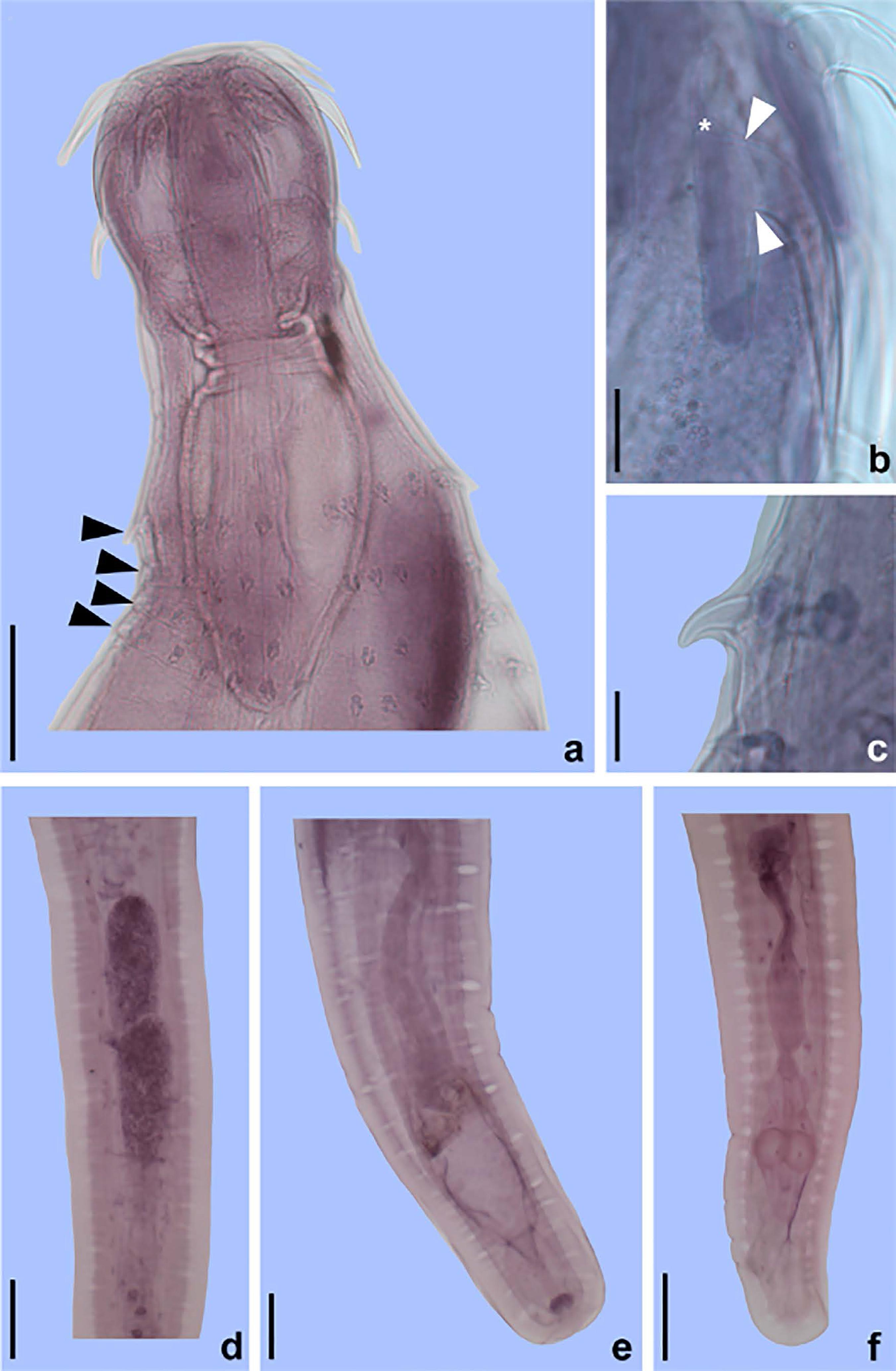Resumo:
A espécie de acantocéfalo Quadrigyrus torquatus Van Cleave, 1920, tem sido encontrada em diferentes hospedeiros na América do Sul, contudo os estudos recentes não focam no estudo dos caracteres morfológicos. Diferentes espécies de Astyanax Baird & Girard, 1854 foram coletadas com redes do tipo picaré entre janeiro e outubro de 2017, na Ilha da Pintada, Lago Guaíba, Cidade de Porto Alegre (30º17’11’’S e 51º18’01”W), Estado do Rio Grande do Sul, Brasil. Os acantocéfalos encontrados encistados foram processados de acordo com as técnicas para o grupo. Os espécimes de Q. torquatus foram identificados principalmente pela morfologia dos ganchos da probóscide, espinhos do tronco e, pelas medidas realizadas através de microscopia de luz. Observações suplementares na morfologia de Q. torquatus foram realizadas pela primeira vez, considerando a morfologia e o número de ganchos e espinhos. A amplitude das infecções foi 1 (A. aff. fasciatus) e 1‒3 (A. lacustris) helmintos. Esta diferença pode estar associada com o número de hospedeiros examinados, com os hábitos alimentares dos hospedeiros, ou relacionada com aspectos no ciclo de vida do parasito. Este estudo é o primeiro registro de Q. torquatus em A. aff. fasciatus e A. lacustris do Lago Guaíba, estendendo a distribuição do parasito para o sul do Brasil, contribuindo com o conhecimento dos acantocéfalos parasitos de peixes de água doce na América do Sul.
Palavras-chave:
Acantocéfalo; helmintos; endoparasito; taxonomia; região Neotropical



